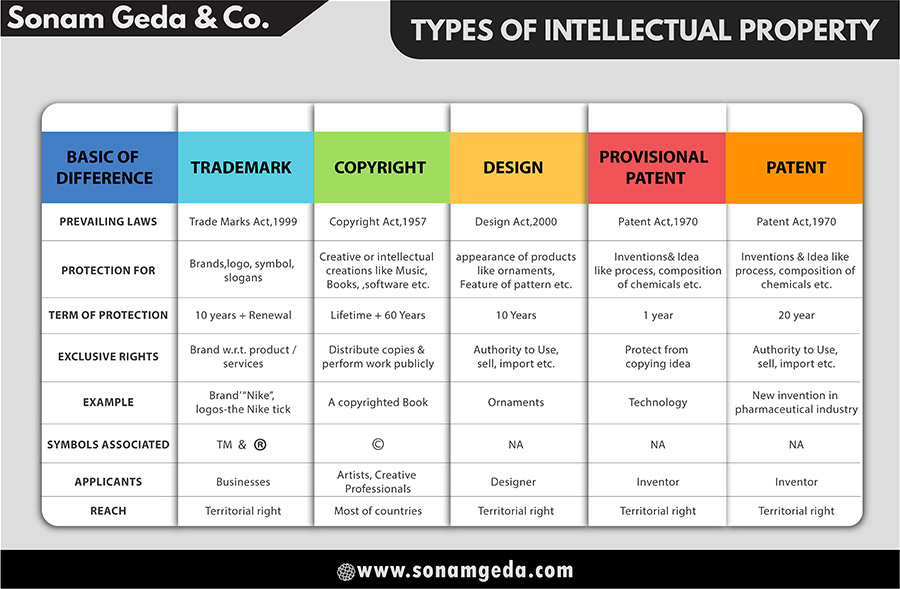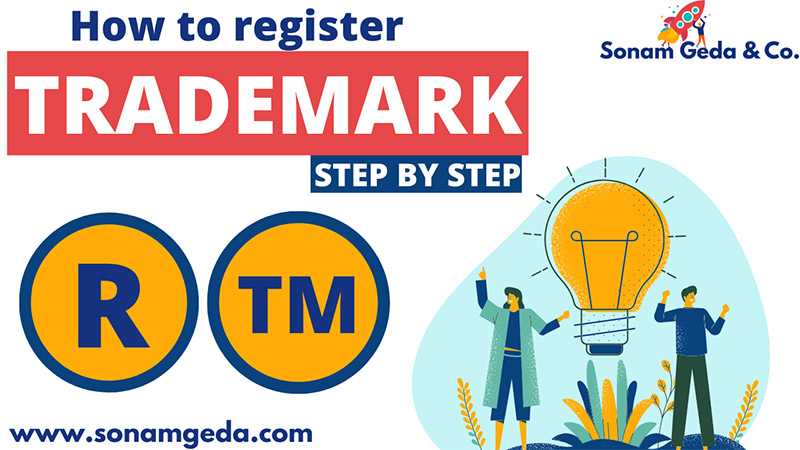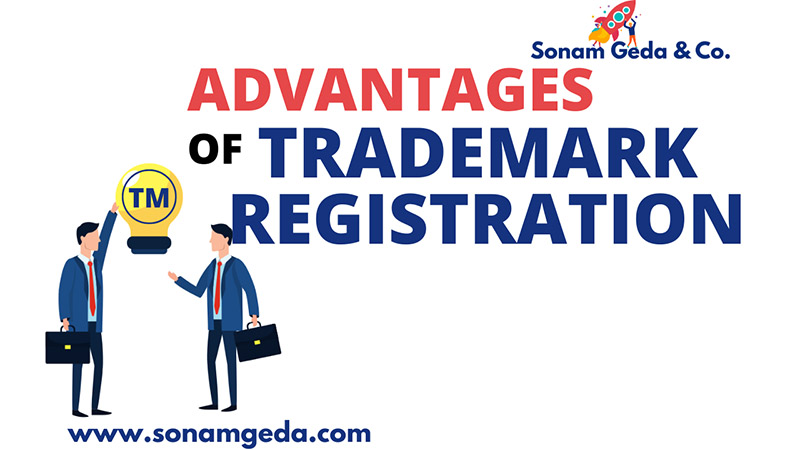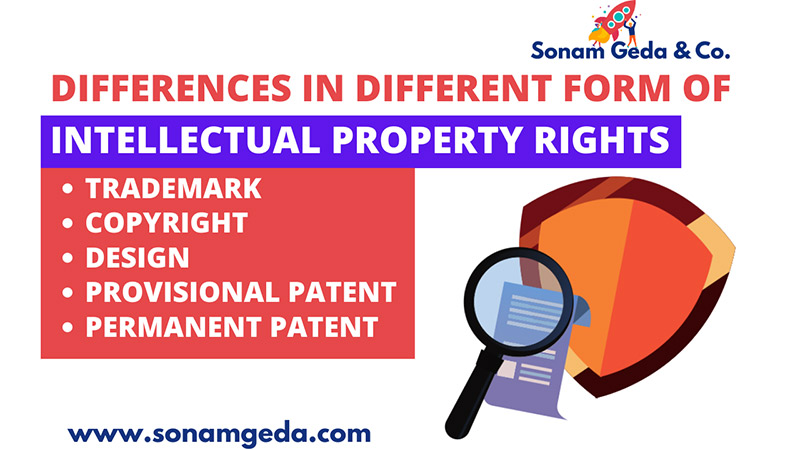Trademark Registration
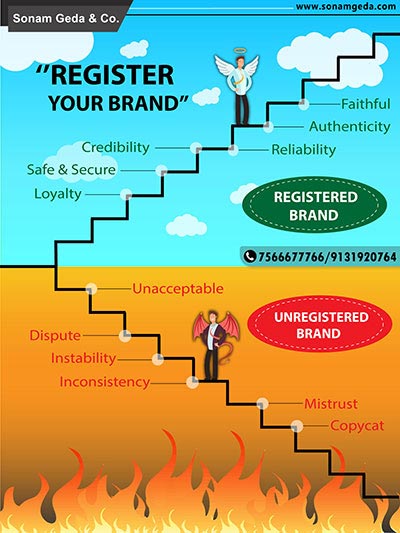
What is Trademark Registration?
"PROTECTING THE BRAND IS EQUAL TO PROTECTING THE BUSINESS."
- A trademark is a intellectual property right which provides exclusive right to the brand of owner or business. A registered trademark is important intangible asset for any Business.
- Trademark is a mark which may be in any of the form i.e. logo, slogan, word, name, device, graphics which gives unique identification to you and your business.
- Trademark distinguish its brand name under appropriate category of goods or services from other similar products or services originating from a different business. It gives a protective cover of the business’s investment.
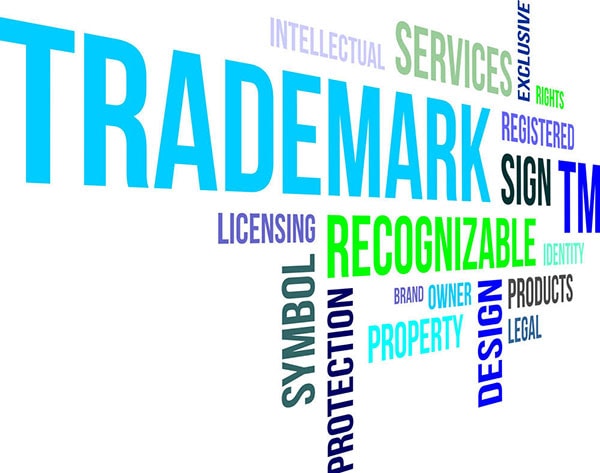
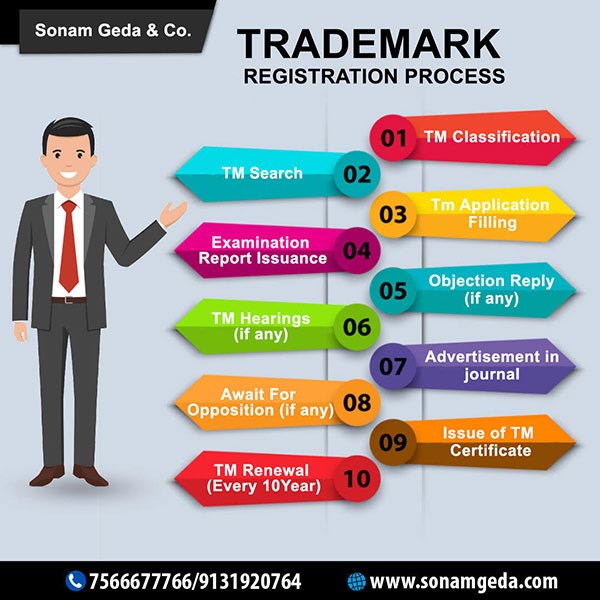
Steps involved in Trademark Registration Process
1. TRADEMARK CLASIFICATION
• The first step and key element for Trademark registration is appropriate Trademark classification of class which is related to particular goods or services. We will help you to choose the correct class under which your product/ service falls. All the products & services are classified in total 45 classes by the Trademark Registry.
• All the 45 classes are broadly divided into 3 categories.
o Manufacturing: Class 1 to 34
o Trading: Class 35
o Services: Class 35 to 45
What are the reason for Trademark Classes?
The reason for the trademark classification is to specify which goods or services are covered under particular class.
• For example, if any person / entity is selling furniture with the brand name of ‘ABC’, then it will be covered under class 20 and applicant will file the application under the same class which is related to furniture goods. On the other hand if any other person/entity uses the mark “ABC” for medicines, then that is also allowed to use the mark “ABC” because medicines falls under different TM Class 5.
This concludes different owners can file trademark application under the different classes for the same brand name used by them.
• There is an exception that if the mark is well-known mark and even this mark come under only one class, yet another person/entity if wish to use well-known marks then that person/entity has to take prior permission of well-known mark’s owner.
2. TRADEMARK SEARCH
After identifying the relevant class for trademark, then search will be taken with consideration of following points:
• It should not similar to an existing name on record of registry
• It should not be a well known or generic term like "Music" or "Furniture"
• It should not be deceptive or misleading people
• It should not contains bad or offensive words
• It should not use words like Government or President or other well-known personalities
3. TRADEMARK APPLICATION FILING
For the purpose of trademark filing ,we will prepare the authorization letter first with the help of documents submitted by you. This gives us the authority to make the trademark registration on your behalf and then we proceed with the submitting of application to the Registrar of Trademarks. Once the application is submitted,TM receipt is provided and you will get the right to use the ™ symbol.
4. EXAMINATION REPORT
After filing of application ,the examiner checks the application and issue the examination report. In case the Trademark Examiner finds that the mark is identical or similar to an existing trademark then examiner will issue a notice of objection. The objection raised must be replied within 30 days.
5. OBJECTION REPLY(IF ANY)
In case your trademark application is objected by the Trademark Examiner, The reply filed will be examined by the Trademark officer in accordance with certain guidelines and procedures. The trademark officer might accept or reject the application as per his/her own discretion.
6. TRADEMARK HEARING (IF ANY)
On submitting the reply to the notice, a Show cause Hearing date may be allotted to the applicant for presenting the proof of use and submit arguments for registration of the mark before the Registrar of Trademarks.
7. ADVERTISEMENT IN JOURNAL
The trademark application once accepted by the registry, then it will be publish in the trademark journal for period of 4 months.
8. AWAIT FOR OPPSITION (IF ANY)
During the period of 4 month of trademark publishing, the general public is having right to oppose the brand and if during that period , it is not opposed by anyone then trademark will be register.
9. ISSUE OF TRADEMARK CERTIFICATE
Once the trademark is registered, the certificate of registration of trademark is provided by registry online. From the date of registration, the applicant is having right to use ® with their brand or logo.
10. TRADEMARK RENEWAL
The validity of trademark is 10 years which can be renew before expiry of ten years by applicant.

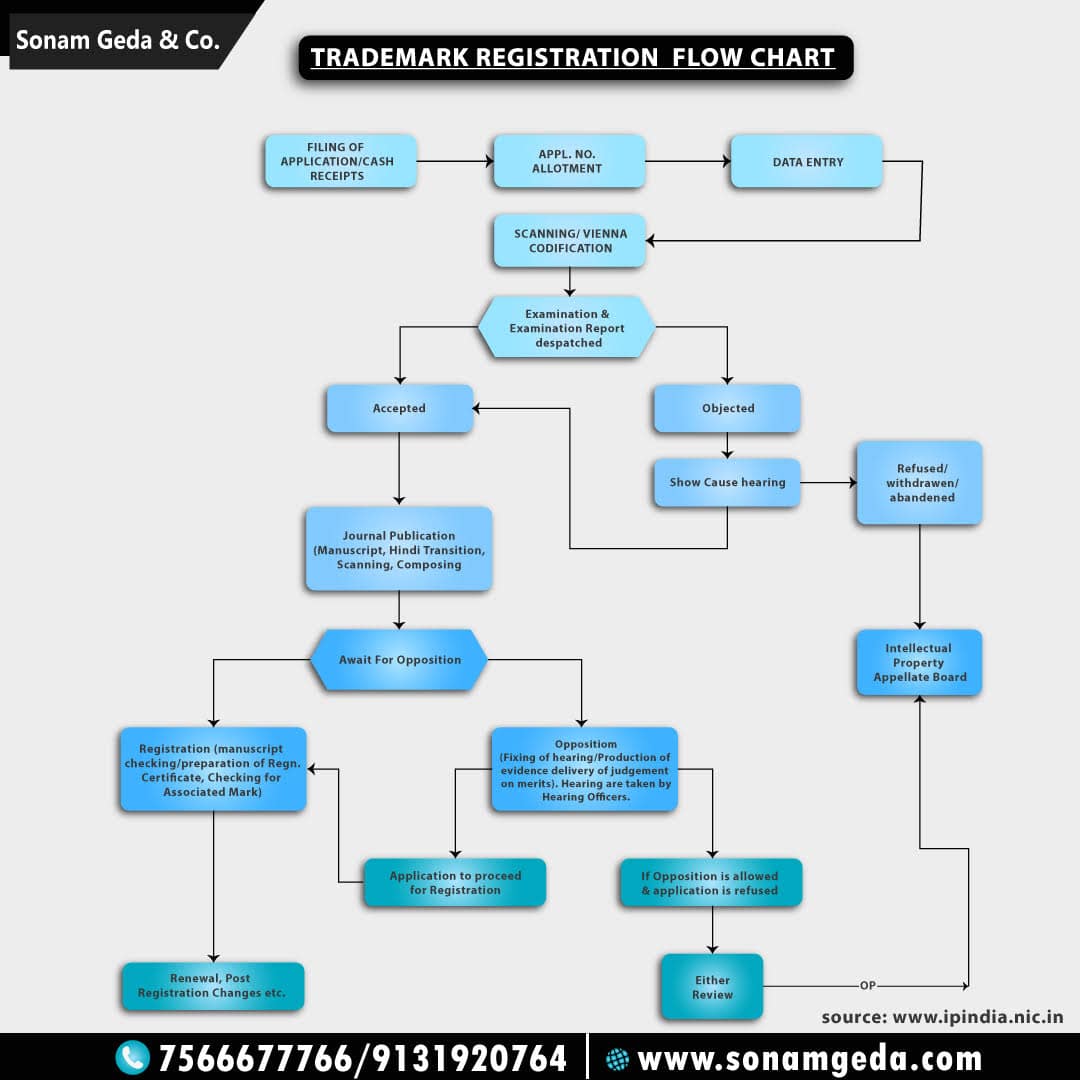
Eligibility & Requirements
A trademark application can be filed by any person or by legal entity ( private firms, individuals, companies, LLP’s, or NGO’s).It does not required to be Indian citizen or Indian Business and hence any foreign national or foreign entity can also apply for trademark registration in India without fulfilment of any other requirement.
- In case of an individual, TM application will be filed on the name of Individual.
- In case of joint owners, TM application will be filed in the name of both the joint owners and both will be brand owner after registration.
- In case of proprietorship firm, the proprietor alone or proprietor with the name of firm can be applicant for TM Application.
- In case of LLP, the trademark application will be mandatory made in the name of LLP only.
- In case of a company, the application must be filed on the name of Company only.
- In case of NGO, The Trademark applicant will be NGO itself.
*In the case of NGOs, LLP’s or companies, it has to filed in the name of the concerned business.
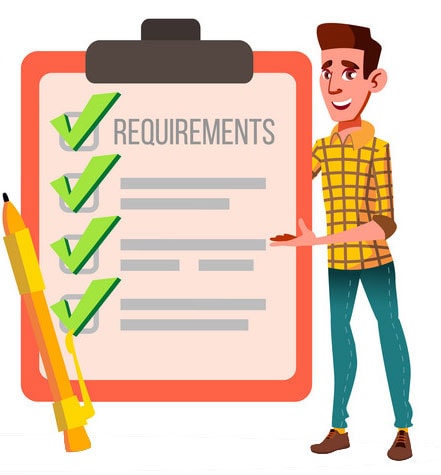
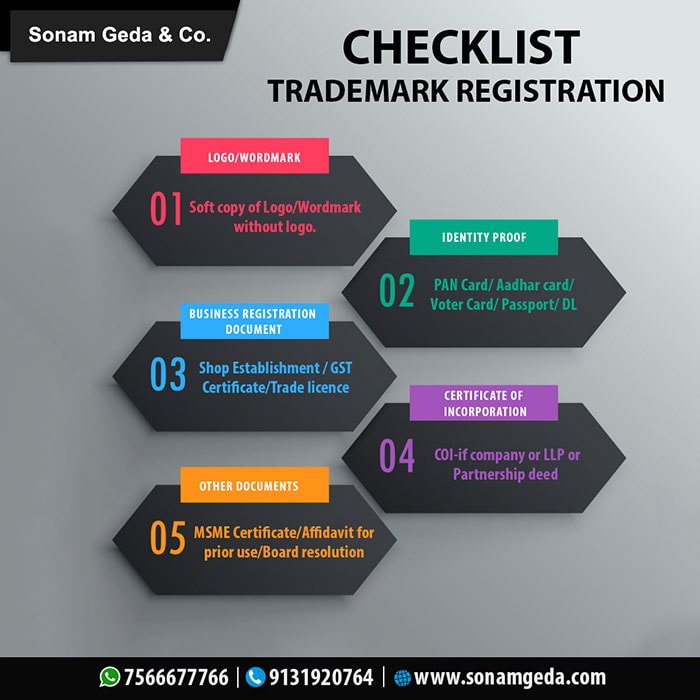

Document Required for Trademark Registration
- For Individual:
• Aadhar Card
• PAN Card
• Mobile number and mail address - For Proprietorship concern:
• Aadhar Card of proprietor
• Pan Card of proprietor
• Any one registration document of proprietorship firm (Shop establishment license, GST Registration, Trade license, MSME certificate)
• Mobile number and mail address - For Partnership concern:
• Aadhar Card of authorized partner
• Pan Card of authorized partner
• Pan card of partnership firm
• Partnership deed
• MSME certificate of partnership firm (50% relief in government fees)
• Government fees without MSME would be Rupees 9000/-.
• Mobile number and mail address of authorized Partner - For Company /LLP:
• Aadhar Card of Authorized Director /Authorized Designated Partner
• Pan Card of Authorized Director /Authorized Designated Partner
• Certificate of Incorporation
• Pan card of company
• MSME certificate of company (50% relief in government fees)
• Board resolution of company
• Government fees without MSME would be Rupees 9000/-.
• Mobile number and mail address of Authorized Director /Authorized Designated Partner
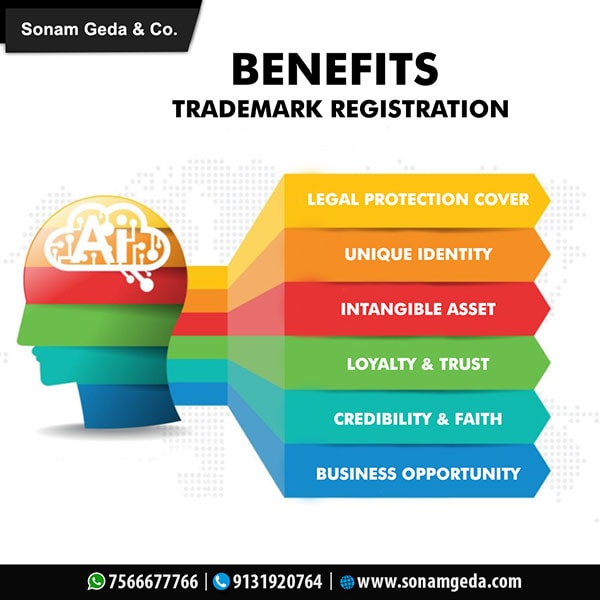
Benefits of Trademark Registration
- Credibility - A registered mark is an intangible asset for the business and it creates building up trust, reliability, quality, and goodwill in the minds of stakeholders.
- Business Opportunity - It provides a Business Opportunity to expand the business with the registered trademark and gives unique identity in the market when it compared to other competitors especially to sell it on online platforms like Amazon, Flipkart, any e commerce business etc.
- Legal Protection cover - The registration of trademark gives the legal protection in the law from the person like copycats. If, by chance, someone tries to use your mark, you can file an opposition case against them for financial damages. you can take up the issue legally and sue them
- Unique Identity - The registered mark gives the better identity and good recognition in the market and customers will identify a product or service only with the brand name or logo. A unique and distinctive logo immediately grabs the attention of your customers.
- Intangible asset - The registered trademark creates valuable asset in the business which can be commercially contracted, sold and franchised to other person or any entity.
- Loyalty - A recognizable business logo/ Brand name builds brand loyalty as your business grows and it becomes familiar/popular in a large number of consumers. This popularity creates the impression that your brand is trustworthy and reliable.


What is Trademark?
- A trademark is a intellectual property right which provides exclusive right to the brand of owner or business. A registered trademark is important intangible asset for any Business.
- Trademark is a mark which may be in any of the form i.e.logo, slogan, word, name, device, graphics which gives unique identification to you and your business.
- Trademark distinguish its brand name under appropriate category of goods or services from other similar products or services originating from a different business. It gives a protective cover of the business’s investment.
What are the steps involved in Trademark Registration?
- STEP 1: Trademark Classification
- STEP 2: Trademark Search
- STEP 3: Trademark Application Filing
- STEP 4: Examination Report
- STEP 5: Objections Reply (If any).
- STEP 6: Trademark Hearing (If any).
- STEP 7: Advertisement in Journal
- STEP 8: Wait for Opposition (If any)
- STEP 9: Issue of Trademark Certificate
- STEP 10: Trademark Renewal
What documents are required for Trademark Registration?
For Individual/Proprietorship Firm
- Soft copy of Logo (if Applicable)/ TM application can be filed for Word mark without logo.
- Identity proof of Applicant (PAN Card/ Aadhar card/ Voter Card/ Passport/ DL)
- Business registration document-(Shops Establishment License / GST Registration Certificate/Trade licence(anyone)
- Power of attorney to be signed by the applicant on Rs. 100 stamp paper with notary.
- Date of first use of the trademark in India, if used prior to applying along with affidavit for the same.
- If the mark contains or consists of non-English words, a translation of those words into English will be needed.
For Company/Partnership/LLP/NGO-Apart from above mentioned documents, following additional documents will also be required :
- Certificate of Incorporation/ Partnership Deed
- Board Resolution for authorization (for companies only)
- MSME Certificate (if any)
Who is eligible to file an application for Trademark Registration?
A trademark application can be filed by any person or by legal entity ( private firms, individuals, companies, LLP’s, or NGO’s).It does not required to be Indian citizen or Indian Business and hence any foreign national or foreign entity can also apply for trademark registration in India without fulfilment of any other requirement.
What are the requirements for filing Trademark (TM) Registration Application?
- In case of an individual, TM application will be filed on the name of Individual.
- In case of joint owners, TM application will be filed in the name of both the joint owners and both will be brand owner after registration.
- In case of proprietorship firm, the proprietor alone or proprietor with the name of firm can be applicant for TM Application.
- In case of LLP, the trademark application will be mandatory made in the name of LLP only.
- In case of a company, the application must be filed on the name of Company only.
- In case of NGO, The Trademark applicant will be NGO itself.
*In the case of NGOs, LLP’s or companies, it has to filed in the name of the concerned business.
What are the advantages of Trademark Registration?
- Credibility - A registered mark is an intangible asset for the business and it creates building up trust, reliability, quality, and goodwill in the minds of stakeholders.
- Business Opportunity - It provides a Business Opportunity to expand the business with the registered mark and gives unique identity in the market when it compared to other competitors especially to sell it on online platforms like Amazon, Flipkart, any e commerce business etc.
- Legal Protection cover - The registration of trademark gives the legal protection in the law from the person like copycats. If, by chance, someone tries to use your mark, you can file an opposition case against them for financial damages. you can take up the issue legally and sue them
- Unique Identity - The registered mark gives the better identity and good recognition in the market and customers will identify a product or service only with the brand name or logo. A unique and distinctive logo immediately grabs the attention of your customers.
- Intangible asset - The registered trademark creates valuable asset in the business which can be commercially contracted, sold and franchised to other person or any entity.
- Loyalty - A recognizable business logo/ Brand name builds brand loyalty as your business grows and it becomes familiar/popular in a large number of consumers. This popularity creates the impression that your brand is trustworthy and reliable.
What is difference between Trademark and different form of Intellectual Properties?
A detailed comparative chart of difference between various forms of intellectual properties can be found at the end of this page.
Difference in Different Form of Intellectual Property Rights
What is Trademark Classes?
The first step and key element for Trademark registration is appropriate Trademark classification of class which is related to particular goods or services. We will help you to choose the correct class under which your product/ service falls. All the products & services are classified in total 45 classes by the Trademark Registry.
What are the Categories of Trademark Classes?
All the 45 classes are broadly divided into 3 categories.
o Manufacturing: Class 1 to 34
o Trading: Class 35
o Services: Class 36 to 45
When one can use ™ & ® mark?
™ is used when registration is under process. ® is used when Trademark is registered.
What is Trademark Objection?
Trademark objections are very common and most of the application faces these objections. However, trademark objections are not fair always. Therefore full care should be taken while filing the trademark application because once objection is raised by examiner then normally it takes lot of time to process further.
Once a trademark application is filed, the Trade Marks Registrar will process the same application and issue an Examination Report which may allow to be advertised before registration or examiner can raise an objection for applied mark.
What are the examples of Trademark?
A trademark is an intellectual property right which provides exclusive right to the brand of owner or business. Some of the examples of trademark are Parle, Domino’s, Pizza hut, Spykar, etc.
What is Validity of Trademark?
The Trademark is Valid for 10 years and can be made perpetual by renewing it in every 10 years.
Videos on Logo Registration
To view video, click on image
Other Related Videos
To view video, click on image
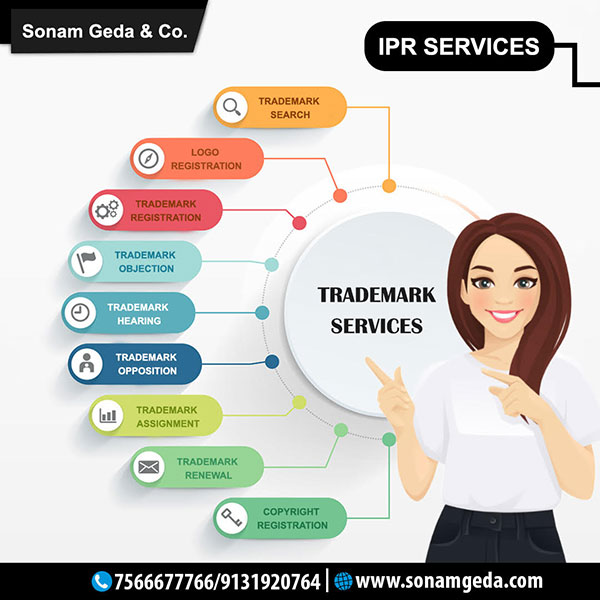
Subscribe Our Newsletter
Get useful latest news & other important update on your email.






